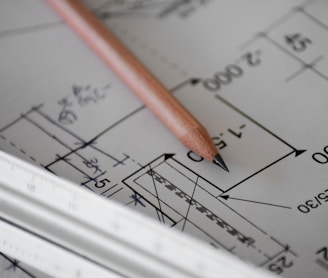The Remodeling Process
6/14/20233 min read


A Comprehensive Guide to the Home Remodeling Process
Embarking on a home remodeling project is an exciting yet challenging endeavor. Whether you're considering a kitchen renovation, bathroom makeover, or a complete overhaul of your living space, understanding the remodeling process is essential for a successful outcome. In this blog post, we'll walk you through the key steps involved in a typical home remodeling project, providing you with a comprehensive guide to help you navigate this transformative journey.
1. Define Your Goals and Budget:
Before diving into any remodeling project, it's crucial to clearly define your goals and establish a realistic budget. Identify the areas of your home that require attention and consider your desired outcomes. Do you seek functionality, aesthetics, or both? Understanding your objectives will guide you in making informed decisions throughout the process. Simultaneously, determining a budget will help you prioritize expenses and select suitable materials and finishes.
2. Research and Inspiration:
Take the time to gather inspiration for your remodeling project. Browse through interior design magazines, websites, and social media platforms to gather ideas and create a vision board. Pay attention to the latest trends, color palettes, and materials that align with your style preferences. This research phase will help you communicate your expectations effectively to professionals you might work with later.
3. Consult with Professionals:
For complex remodeling projects or major structural changes, it's wise to consult with professionals such as architects, interior designers, or contractors. These experts can provide valuable insights, offer advice on space planning, and ensure that your vision aligns with the technical and structural aspects of your home. Engaging professionals early in the process can save time, money, and potential headaches down the line.
4. Design and Planning:
Once you have a clear vision and professional guidance, it's time to develop a detailed plan for your remodeling project. This phase involves creating blueprints, floor plans, and 3D renderings to visualize the final result. Design decisions regarding materials, colors, fixtures, and lighting will be made during this stage. Collaborate closely with your design team to ensure that the design meets your expectations while adhering to practical considerations.
5. Obtain Permits and Approvals:
Depending on the scope of your project and local regulations, you may need to obtain permits and approvals before commencing construction. Check with your local building department to understand the necessary paperwork, inspections, and fees required. Failure to comply with these regulations can result in delays, fines, or even having to undo completed work.
6. Selecting Contractors and Sourcing Materials:
Choosing reliable and reputable contractors is crucial to the success of your remodeling project. Request multiple quotes, review portfolios, and check references before making a final decision. Obtain a detailed contract that outlines the scope of work, timeline, payment terms, and any warranties. Similarly, carefully source materials, fixtures, and finishes that align with your design and budget. Research suppliers, compare prices, and ensure timely delivery of materials to avoid unnecessary delays.
7. Construction and Implementation:
With the planning, permits, and materials in place, it's time to break ground and begin the construction phase. Depending on the scale of your project, this can range from minor modifications to extensive structural work. Regular communication with your contractors and project manager is crucial to stay informed about progress and address any concerns promptly. Keep in mind that unexpected issues may arise during construction, so maintain flexibility and work closely with your team to find appropriate solutions.
8. Finishing Touches and Completion:
As the construction phase nears completion, attention turns to the finishing touches that will bring your remodeling project to life. This includes painting, installing fixtures, cabinetry, countertops, and flooring, as well as any electrical and plumbing work. Regular inspections and walkthroughs will ensure that the work meets your standards. Communicate openly with
Company
4360 Mensha Pl, San Diego, CA 92130
Lic #: 1101716
Call: (619) 838-9119
Email: FortunaBuildersInc@gmail.com
Contact
Location
We at Fortuna Builders are a women’s owned small business collaborative team of highly qualified remodeling professionals, and trade partners who are recognized as some of the most dedicated, skilled craftsmen in San Diego. We build custom homes, whole home remodels, additions, ADU’s, outdoor living spaces, kitchens, bathrooms, and other areas of your home that encompass your unique needs and desires.


Socials
